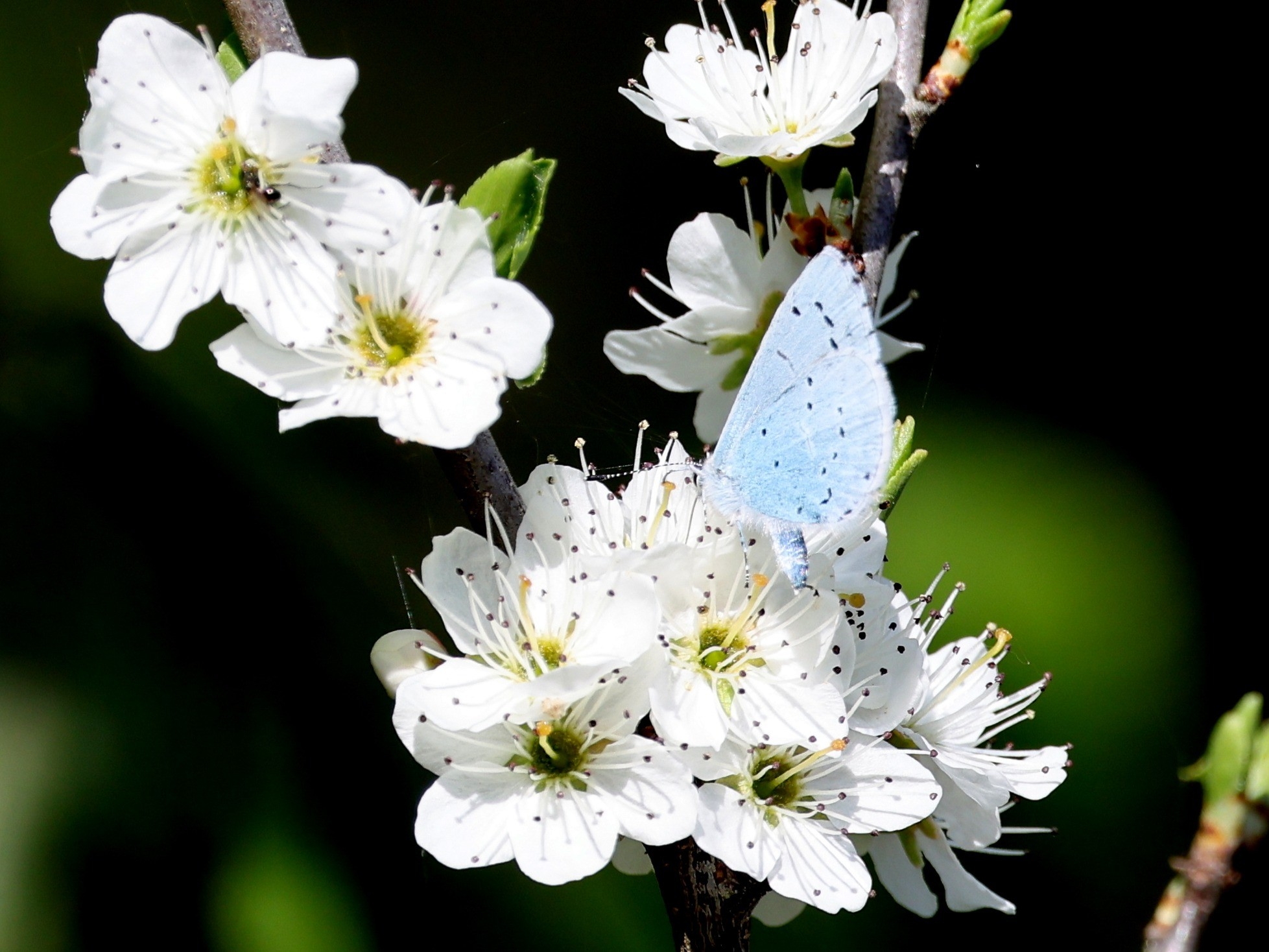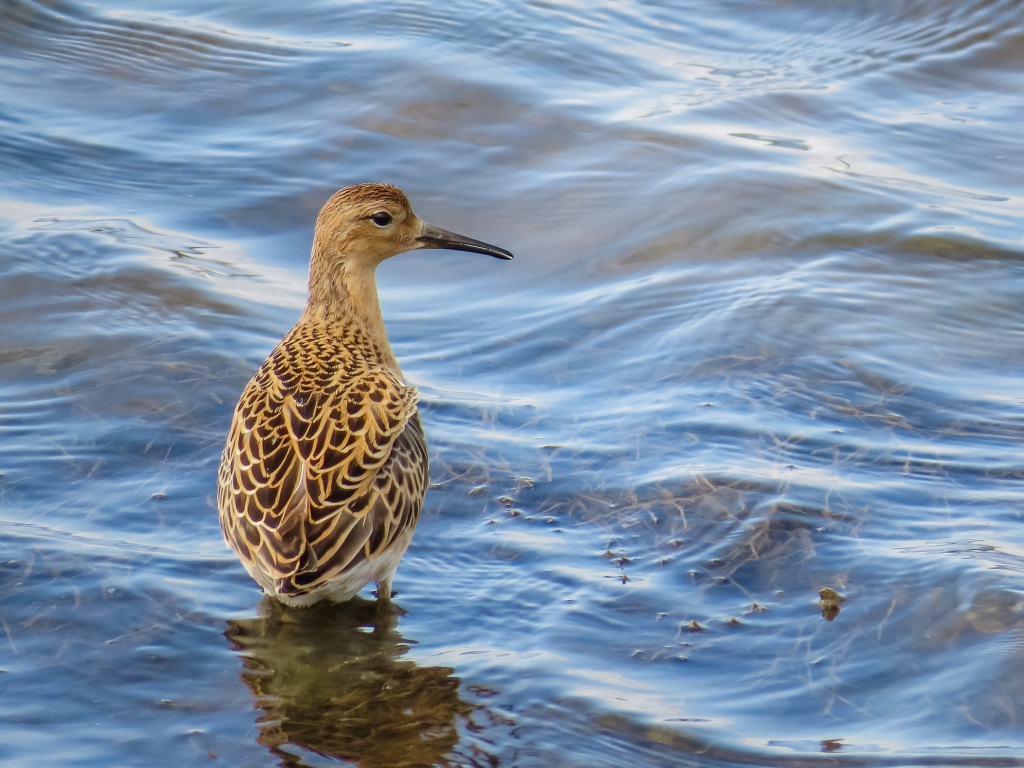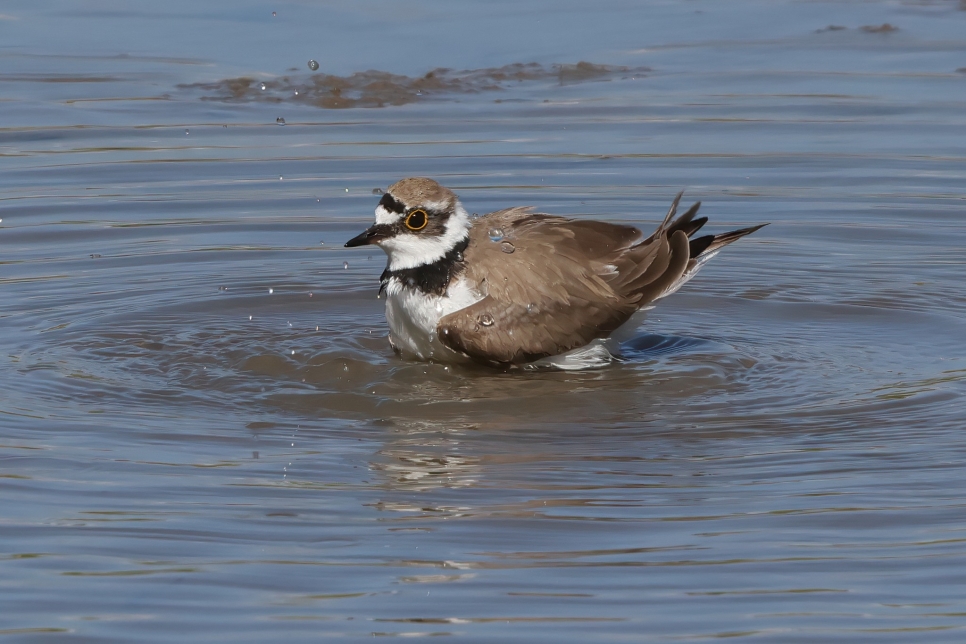Recent Wildlife Sightings 23rd - 29th March
Highlights: White-Fronted Goose, Swallow, Willow Warbler, Pallid Harrier
This week saw the reserve endure just about every conceivable form of weather for this time of year, from torrential downpours and hammering hail to glistening sunshine and cloudless blue skies, with a splash of snow thrown in on Thursday for good measure. The wildlife was probably just as confused as us by the weather, but this didn't stop the steady stream of summer arrivals and bleary-eyed creatures waking from their hibernation.
Highlights: White-Fronted Goose, Swallow, Willow Warbler, Pallid Harrier
On Friday morning, a White-Fronted Goose was spotted from British Steel Hide amongst the abundant Greylag Goose feeding on the banks of Saline Lagoon. There are two races of White-Fronted Goose that visit this country during the winter, with this bird being a member of the European race that breeds in Siberia. With only a couple of thousand of this race visiting the UK each year, this was an exciting spot. A closely related species, the Lesser White-Fronted Goose, can be seen up close on Top Pond in our living collection, allowing you to study their visual features in detail and observe their behaviours.
Zipping and zooming about the sky, the acrobatic Swallow made its return this week, with a pair seen above Western Scrapes on Monday morning, and a few dozen spotted over Eastern Scrapes the following day. Like the Sand Martin that arrived two weeks ago, Swallow are also long-distance migrants, with some known to have travelled from South Africa to get to us. No doubt they were exhausted by the journey, but will have been happy to find our reserve teeming with tasty insects to refuel them.
Following on from the arrival of Blackcap from Southern Europe last week, the cacophony of sounds in the Millennium Wetlands grew even richer on Tuesday, with the sudden arrival of several Willow Warbler. The sound of their descending song of fluid notes is a pleasure to hear each morning, but is also helpful at distinguishing them from the visually similar Chiffchaff.
For the first time since February, the Pallid Harrier that’s been in the surrounding area since November was spotted from British Steel Hide at the weekend. In recent weeks, the bird has been sighted on Gower, giving more people the chance to see this handsome and rare bird of prey. Some fortunate visitors managed to capture its return to the North side of the Loughor estuary - you can see some photos from visitors Ruth Jones and Neil Fermandel on our Facebook page here.
On Wednesday, visitors were treated to an extended encounter with a Water Vole from the walkway next to the soft play area in the Visitor Centre. One of our star species on site, Water Vole are very elusive and rarely seen for longer than a few seconds (if at all!). The reason for this creature to emerge from its dense reedbed cover was to investigate some Mallard eggs that had been abandoned on the small island. On the bright side, it was good to see the eggs providing food for an endangered creature like the Water Vole.
On one of the drier days this week, some of the first butterflies emerging from hibernation were spotted around the Millennium Wetlands, with a Peacock Butterfly being one of the most colourful and distinctive. The striking 'eyespots' on its wings are a consequence of these invertebrates evolving for the purpose of confusing and discouraging predators, but they make for an attractive sight for us humans.
A pair of Willow Tit have regularly been seen at the feeders behind Peter Scott Hide during the past week, giving visitors a chance to see this scarce breeding bird close up. The Long-Tailed Duck is also still around, mostly diving for food on Freshwater Lagoon, but even popping up in Europe Pen one morning, nearby to our collection birds.



